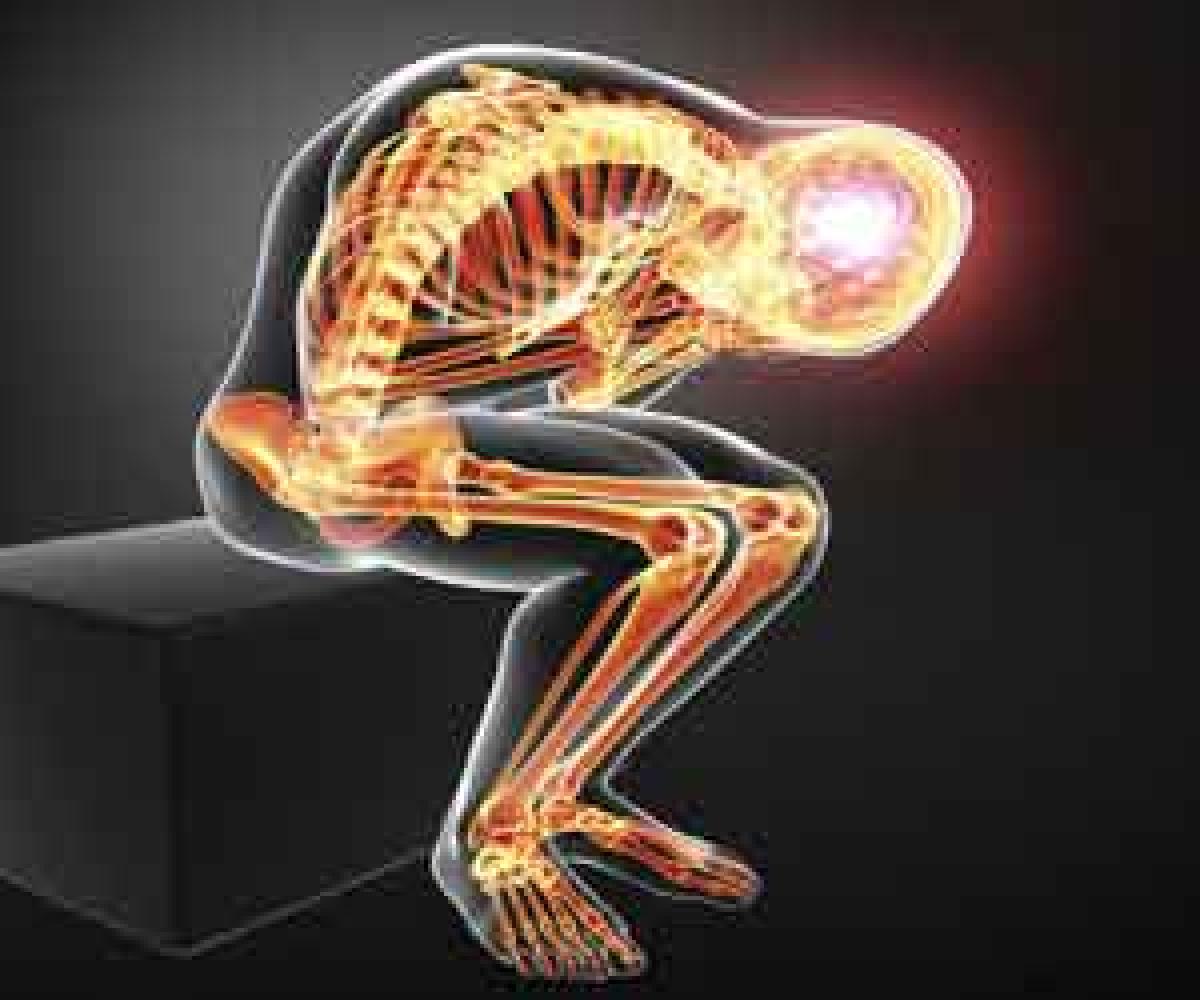Live
- Youth urged to donate blood to save lives
- National Energy Conservation Week from today
- Tourism projects to be put on fast track as VMRDA sets targets
- AI in KGBVs to empower students, build competencies
- Waltair Division observes ‘Energy Conservation Week’
- Srikakulam police bust two fake note gangs
- 3 held, 810 kg ganja seized
- Workshop on ‘Live Agri-technologies’ concludes at SPMVV
- Advancing Biomedical Research with NMR techniques
- Key Highlights of India in 2024
Just In

Over the past few years, I observed that these days more and more people are complaining about chronic pain in the knee, shoulder back or joint pains. This led me to do research on how to prevent chronic pain. The causes can include, being overweight, highly stressed, chemicals and pesticides in food and intake of certain foods can trigger pain too.
Over the past few years, I observed that these days more and more people are complaining about chronic pain in the knee, shoulder back or joint pains. This led me to do research on how to prevent chronic pain. The causes can include, being overweight, highly stressed, chemicals and pesticides in food and intake of certain foods can trigger pain too.
Sometimes no food is to blame for causing inflammation, but overall diet can be the cause. When our bodies are well nourished, we are able to heal quickly. Certain herbs, spices, fats and grains can prevent chronic pain and it should be part of your daily routine, and combined with deep breathing, exposure to sunlight and certain yogic asanas help in preventing chronic pain. See what foods you need to add and eliminate.
Experiment for 3 months, by adding foods that ease pain and remove foods that cause pain. See if the pain is lesser. Re-introduce them one at a time, after 3 months i.e., once a week if pain triggers remove them from your diet.
Tulsi – reduces inflammation and helps de-stress, preventing pain. One can easily chew on a few tulsi leaves daily or toss it in your soups and salads.
Spices – Ginger, Turmeric and Garlic Turmeric is an ancient spice used in traditional Indian medicine. The yellow pigment in turmeric called curcumin helps to reduce joint inflammation.
Ginger is a wonder spice that has anti- inflammatory properties, and soothes aching joints.
Garlic in northern parts of India is a common cure for knee and joint pain. Very popular is the tiny powerful Jammu garlic commonly called the medicine for knee pain.
Ghee - is an amazing cure for pain in any part of the body. It is very important for it to be part of your daily fat intake; opt for cow’s ghee.
Vegetables - like the entire gourd family and carrot must be a part of your regular diet. Nightshade foods have a high amount of alkaloids, which affect joint health and muscle movement. When pain is very high whether it is arthritis, gout or joint pain. The following are the nightshade foods, tomatoes, peppers, paprika, eggplant (one with lots of seeds), potatoes (especially the ones that have green spots) and aspartame
Organic foods – are free from chemicals pesticides and colour, have anti-inflammatory properties because they have more beneficial fibre, vitamins and minerals.
Wheat - refined grains, white flour, bread, pasta, noodles which are low in fibre and gluten can cause joint pains. Eliminating gluten causes a fall in arthritis pain. Shift to gluten free grains, amaranth (rajgira), unpolished rice, bajra (pearl millet) jowar (sorghum) ragi (finger millet).
Dairy - Milk and curd can trigger pain – If the pain is chronic avoid dairy completely. Slowly introduce it back in your diet. To counteract the effect of milk and prevent the pain from triggering, one could add turmeric, ginger or saffron or good old Indian “masala chai” powder to the milk. Always have fresh homemade curd, which is not sour or kept in the fridge. Adding roasted cumin rock salt can ease its inflammatory properties.
Vinegar - is a common joint pain trigger especially synthetic vinegar. Use balsamic or switch to lemon. Adding oregano, ginger, garlic and extra virgin olive oil can reduce its anti-inflammatory properties.
Tamarind- for some people it can cause inflammation of joints leading to pain. One can switch to lemon, even in your dals.
Beverages - soda, caffeine, alcohol increases swellings and can cause joint inflammation, elevated uric acid and pain due to gout.
Lentils - especially tuvar dal (pigeon pea) is a common trigger for joint pains and arthritis .
Processed meat and red meat increases uric acid leading to pain especially in the toe and thumbs.
By: Naini Setalvad

© 2024 Hyderabad Media House Limited/The Hans India. All rights reserved. Powered by hocalwire.com







